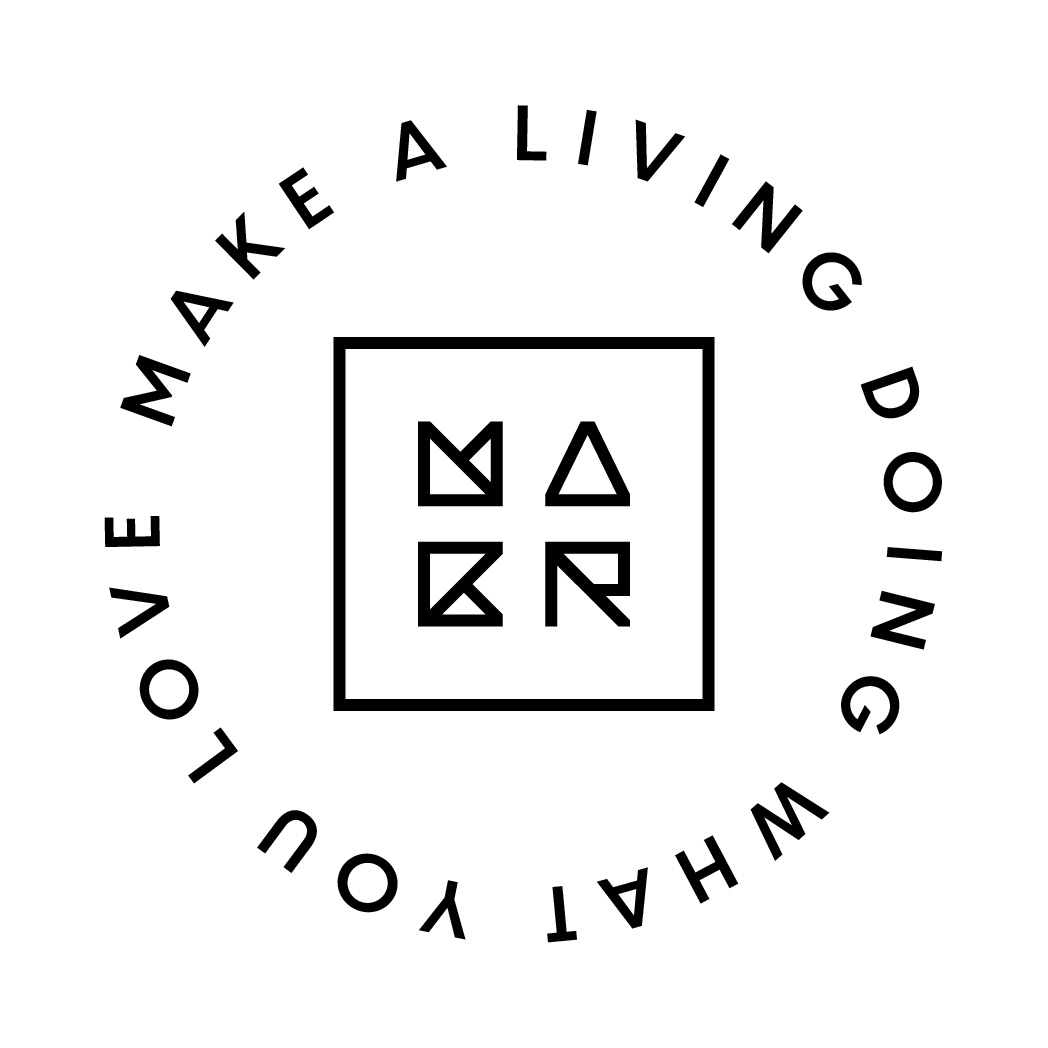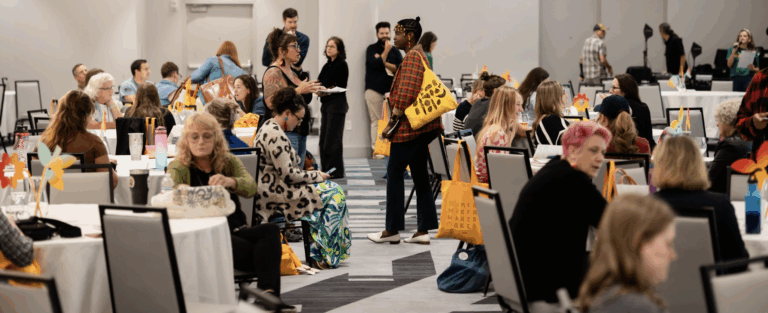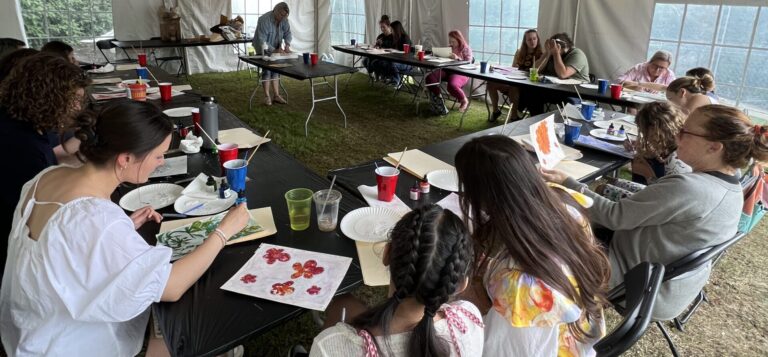
Ryan-Ashley Anderson, Smart + Becker
Ryan-Ashley Anderson of Smart + Becker shared 10 years’ worth of experience applying to craft shows at a Make. Learn. Grow. session on October 18. Couldn’t get away that day?
Here are some of the top takeaways.
1. Find out what shows are right for you and your product. Fairs have different personalities and attract different kinds of people; the shoppers at a fine craft fair are likely not the same ones at an indie craft fair. Determine which ones match your market by looking at their websites and social media; their photos and vendors lists will offer some idea.
2. Be cautious about non-juried shows. A non-juried show says they don’t have a brand or a marketing budget, she said. In order to create value, shows should promise a certain caliber of work. If you’re just experimenting and wanting to get comfortable, that’s one thing. “But I can’t afford to go to a non-juried show,” Ryan-Ashley said. “I want to make money. if building your business is part of your reason for going, you really want to go to a juried show.”
3. Keep a spreadsheet of the shows that you investigate, along with notes about their costs, deadlines and how well they fit your market. One that doesn’t work for you now might in the future, and the spreadsheet will keep you from starting from scratch.

4. Looks matter. Make sure your photography positions you for the markets your work belongs in. Craft fairs want to emphasize quality. Your photos need to show more than products lying on a table. Show your work in different ways: a tight product shot, a person enjoying it, perhaps a finished piece pictured with the parts that are used to create it. When taking photos, think about the ways you use the product and where you find it. Another tip: white canvas makes a great background for tight product shots. Pick up a big one when they’re on sale at a craft store. Ryan-Ashley positions it near natural light and shoots good closeups with her iPhone.
5. Craft show organizers often look quickly at applications and then go to the applicant’s social media. Are you posting regularly and engaging with people? Organizers want to be confident you’ll promote the upcoming show. You needn’t have thousands of followers; they want to see an earnest attempt to build a business.
6. Don’t hesitate to reach out to organizers and ask what they’re looking for or how you can improve your application and make it stand out.
7. On the application form, the artist’s bio should include your experience, what you’re doing now and your educational background.
8. The artist’s statement should explain why you make art and what inspires you. Help the organizers see the intentionality behind your work; for instance, why you care about how you source your materials.
9. The description of work should explain how it is created, the materials incorporated, the features that set it apart, its functions. The details matter. Highlight anything you do that’s interesting and intentional; for instance, if you use leather tassels, why you do and where the leather comes from – is it repurposed because you want your work to be sustainable?
10. It’s a red flag if a show is asking you to donate products for giveaways. You can offer 10 percent off coupons for a swag bag and give value without giving away your product. But organizers should be spending money on marketing, not burdening vendors.

11. Bed risers do a good job of elevating a table to shopping height. Sawhorses and a hollow door are inexpensive and helpful in creating more display space.
12. How much product do you need to take? Here’s Ryan-Ashley’s formula: “My goal is making $100 per hour, so if it’s a 10-hour show, that’s $1,000. I need to have double that inventory with me, or $2,000 worth of product. You don’t want to be left with an empty booth.”
13. Think about how you merchandise your products in the booth. Does your display meet the level of your pricing?
14. It’s always helpful to hear what shoppers have to say in your booth, so pay attention. “Hearing what people don’t like is really helpful,” Ryan-Ashley said. She made an adjustable-length necklace as a result of comments she overheard and is more mindful that the clasps on her pieces are easy to open.
15. You should create a craft fair app folder on their desktop or in Google Drive that includes the following:
– Headshot
– Product shot
– Lifestyle product shot
– Process shot
– Document with pre-written:
– Bio
– Artist statement
– Description of work
– Excel sheet of craft fair names, application due dates, and any contextual info
This is information that can be copied + pasted into applications so they don’t take forever and cause tons of anxiety.

Do you feel empowered to take on the craft fair application now?
Take a look at our curated list of markets and craft fairs and see which ones are the right fit for you!





